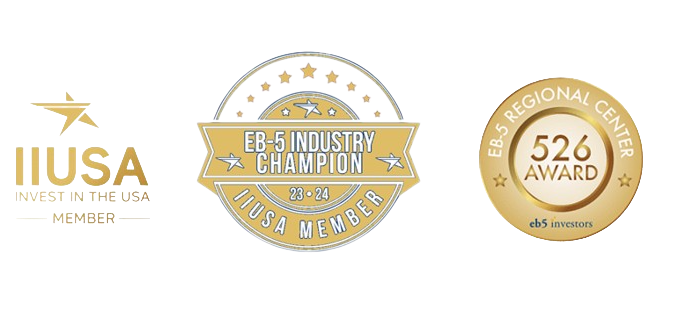The landscape of EB-5 projects is undergoing a shift, with a growing interest in rural EB-5 projects due to upcoming retrogression in the high-unemployment TEA category. As investors from high-demand countries like India and China explore new opportunities, those from lower volume countries are also recognizing the advantages of rural EB-5 projects, including a faster path to residency through priority processing as the first I-526E has been approved with a duration of 11 months. However, some investors still perceive rural projects as riskier than urban ones due to their familiarity with major cities such as New York, Houston, Miami, and Los Angeles. Contrary to the perception that rural projects are riskier than urban ones, careful selection and adherence to certain criteria can significantly reduce any potential risks.
In this discussion, we will debunk this misconception and outline strategies to mitigate risks associated with rural EB-5 projects.
Differences in Project Due Diligence
In addition to engaging the services of experienced EB-5 professionals, such as attorneys and business analysts, to assess the viability of the project from an investment perspective and its compliance with USCIS regulations, investors should know investing in rural land development projects presents unique opportunities and challenges that differ from urban projects.
One critical factor to examine in rural land investments is the land contribution from the developer. It is essential to ascertain that the developer’s contribution genuinely reflects the actual purchase price of the land, rather than an inflated future appraised value. This issue is particularly relevant as land values differ significantly between rural and urban areas. It is important to have documentation showing what the land was actually purchased for, not an alleged future value.
Another factor to consider is unlike urban-based projects, rural land investments often involve “raw” land lacking access to essential utilities like water, sewer, electricity, and roads. Establishing utilities in rural areas can be an extremely expensive endeavor and significantly increase project risk. It is crucial for investors to inquire about the existing utility access or if the EB-5 funds are being allocated to develop the necessary utilities. When EB-5 funds are used for utility development, investors should proceed with caution.
Evaluate Unmet Market Demands
Investors should avoid projects that cater to niche markets with limited growth potential, as they may have a finite and captive market. An example of this would be another hotel or mixed-use development in a ski-town. This type of project is heavily reliant upon seasonality and only cashflows positively during a few months of the year. Further, skiing is an expensive pastime in the U.S. and the middle-class is not growing, so fewer and fewer people will want or be able to have access to this type of project.
Investors should ensure that the rural project offers a unique value proposition that sets it apart from existing competitors or developments in the area. Rather than adding to an already existing supply in a market, projects that fulfill unmet demands are more likely to be quickly absorbed by the market, leading to faster asset stabilization and therefore repayment of EB-5 investments
Choose High-Growth Regions
Opt for rural projects located nearby high-growth cities or regions. Being in close proximity to fast-growing areas, such as emerging metros, ensures a larger target market and potential for continued growth. High-growth regions often experience spillover effects, where the growth and development in the central city radiate outwards to nearby rural areas. In recent years, most growth in rural areas has resulted from this spillover as more people are looking to get out of the dense inner-cities. As large urban cities expand, the surrounding rural locations will also grow.
Proximity to a Metropolitan Statistical Area (MSA)
Select projects within an hour’s distance of an MSA. This significantly lowers construction costs, as materials, labor, and subcontractors can be sourced locally. Rural areas located far from MSAs often incur extra logistics costs for transportation of material and labor, and the construction process itself can be more complex and expensive due to challenging terrains.
The higher costs to construct means the developer will have to achieve higher sales/rental rates to earn the same profit margin. Having access to lower construction costs allows developers to have more flexibility in setting competitive prices while still maintaining a healthy profit margin.
By adhering to these criteria, investors can make informed decisions and choose rural EB-5 projects with lower inherent risks. Proper due diligence and analysis of the project’s location, demand, and market dynamics are essential to ensuring a successful investment.
Rural EB-5 projects can present promising investment opportunities with unique benefits, including a faster path to receiving the green cards through priority processing. While some may perceive them as riskier, careful consideration of critical demands, growth potential, and proximity to high-demand regions can effectively mitigate risks and yield positive outcomes for investors.
Remember, seeking advice from experienced EB-5 professionals is crucial throughout the process to ensure a successful and secure investment journey.
ABOUT HOUSTON EB5
Certified by United States Citizenship and Immigration Services (USCIS) as an EB-5 Regional Center since 2011, Houston EB5 now holds over a decade of experience and is one of the only regional centers to successfully assist clients from obtaining conditional residency to the repayment of investment with profits. We are vertically integrated DC Partners, an award-winning real estate development firm that has the financial strength and expertise to complete assets of all sizes and types. Since 2011, DC Partners and Houston EB5 have jointly developed projects totaling more than $1 billion USD in value. Each opportunity is carefully vetted and pursued via an investment vehicle designed to achieve specific targeted return objectives. www.houstoneb5.com.





